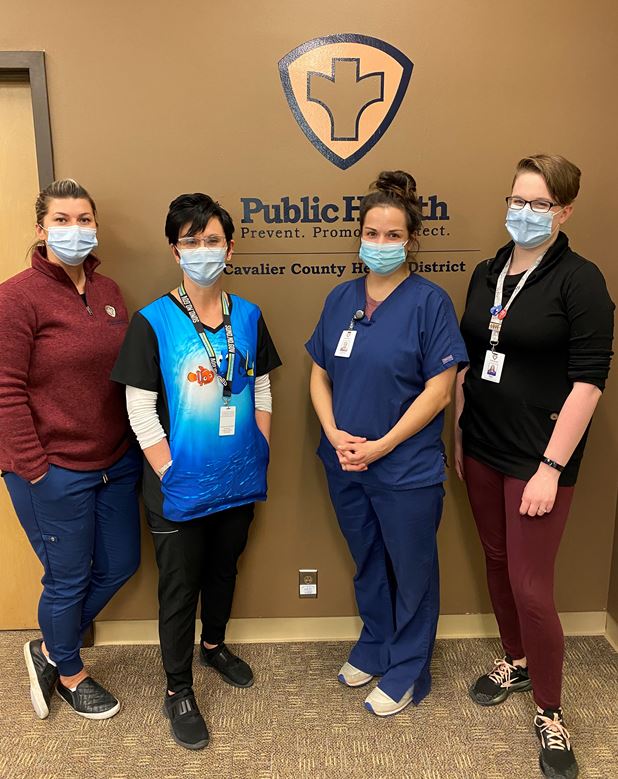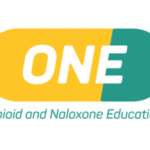
The opioid crisis is a public health emergency that affects people of all races, ages and socioeconomic backgrounds. It is characterized by the overuse and misuse of opioid drugs, including prescription painkillers and illegal drugs, like heroin and fentanyl.
The crisis has led to a significant increase in opioid-related overdose deaths, as well as other negative consequences for individuals, families and communities. It is a complex issue that requires a multifaceted approach to address, including preventative measures, access to treatment and recovery services and changes in prescribing practices.
 Cavalier County is a rural frontier area of northern North Dakota; resting just south of the Canadian border. Geographically the county is large, with a population of 3,600. No community is immune to the opioid crisis, including Cavalier County.
Cavalier County is a rural frontier area of northern North Dakota; resting just south of the Canadian border. Geographically the county is large, with a population of 3,600. No community is immune to the opioid crisis, including Cavalier County.
Fortunately, the team at Cavalier County Public Health has a comprehensive and robust plan to ensure individuals in their community are educated and have access to the opioid overdose drug, Naloxone (Narcan). About six years ago, the department made a concerted effort to address opioid prevention through a state opioid response grant. This effort is associated with North Dakota’s State Opioid Response Grant (SOR), funded by the federal Department of Health and Human Services (DHHS), Substance Abuse and Mental Health Services Administration (SAMHSA), administered through the North Dakota Department of Health and Human Services.
Stephanie Welsh, RN, has been serving residents of Cavalier County for nearly fifteen years in the area of public health; she previously worked in long-term care. We had the privilege of conversing with Stephanie on the efforts to reduce overdose deaths in Cavalier County.
“Our team is appreciative of the support and funding to assist with opioid prevention and credit First Lady Burgum for helping lead this charge in North Dakota. Our work began with Narcan training and access. Since we are geographically large, response times can be an issue. We began by placing Narcan in areas that housed AED equipment throughout the county as it seemed like a natural spot to look for emergency aid. We also offered training and Narcan doses to local first responders and EMS professionals. In rural areas, the volunteer firemen often serve as public health emergency responders. A local pharmacist was also trained and currently assists with education and access.”
She continued, “Our next focus was to have Narcan available in public venues and highly populated areas; schools, gymnasiums, the local hockey arena, community center and a camping ground. We have since broadened our scope to include businesses, including our local bank who expressed concern for their employees who could be at risk due to an accidental overdose due to contaminated money. Our local electric cooperative also contacted us to see if we could offer training to their employees. Prior to our local jail closing, we offered Naloxone training to inmates who were often our high-risk population.”
The department employs a two-prong approach; offering training on how to use Narcan, but also providing the doses, which can be expensive and a barrier to access and use. The team is also equipped to make Narcan available to community members upon request. The department also helps promote take back locations and take back events and safe medication disposal.
To complement the effort, the Cavalier County Health Department offers an adult home visiting program for medication and health management. Courtney Howatt, RN, works with clients in their home to review medication lists and establish medication planners. Howatt frequently utilizes the ONE screening tool for medication review. The ONE Program is based out of North Dakota State University (NDSU).
Howatt added, “I also provide clients with safe storage containers for medication storage, which can reduce unintended access. It is like a medication lock so we know when our clients are not taking their meds correctly and to help with monitoring of medication use. I also do a thorough review of the medication lists for my clients who are taking high-risk prescriptions or those who have recently been prescribed an opioid or are on a high-level of opioid prescriptions in an effort to avoid misuse or an overdose.”
Both Welsh and Howatt agreed one of their greatest challenges is the geographic distance of our county. Residents may live 40 minutes away from the nearest service/hospital, which can be really dangerous in the event of an overdose. Also, they have a long road ahead to overcome the stigma of substance abuse disorder.
Welsh concluded, “I love public health; I’m a public health nerd. I drank the Kool-Aid. I believe in what we do. I really enjoy setting benchmarks and goals and making a difference in the lives of our community members. When you see the number of Narcan kits that we’ve deployed and that we’re beyond a saturation number, that feels really good. We are fortunate to have really strong partners and there’s something to be said for living in a rural area; nothing happens in isolation. I know we are making a difference in the lives of our neighbors. We are creating a culture change and that will sustain long after we end this journey. We are changing the world for the people who come after us.”
Courtney added, “It feels good knowing how much Narcan we’ve distributed and that we have increased availability and potentially saving lives. It is also a really good feeling when you train people and you know they are willing and able to intervene if needed.”
According to the Naloxone Assessment and Distribution Plan, which identifies the total number of doses a local public health unit would need to distribute within their service area in a year to ensure that 90 percent of overdoses witnessed by another individual would have naloxone available for use per is 37 for Cavalier County. To date, the team has distributed 182 doses in their county, which has far surpassed this goal.¹
Access the North Dakota HHS Behavioral Health Division for a comprehensive look at efforts in North Dakota to address the opioid crisis.
Source
- “Estimating Naloxone Need in the United States Across Fentanyl, Heroin, and Prescription Opioid Epidemics: A Modelling Study Lancet Public Health, 2022” by MA Irvine, D Oller, J Boggis, B Bishop, D Coombs, E Wheeler, M DoeSimkins, AY Walley, BDL Marshall, J Bratberg, TC Green.
 ONE (Opioid and Naloxone Education) is an innovative approach to screen and educate patients who receive prescribed opioid medications at participating community pharmacies in the state of North Dakota. Learn more.
ONE (Opioid and Naloxone Education) is an innovative approach to screen and educate patients who receive prescribed opioid medications at participating community pharmacies in the state of North Dakota. Learn more.
